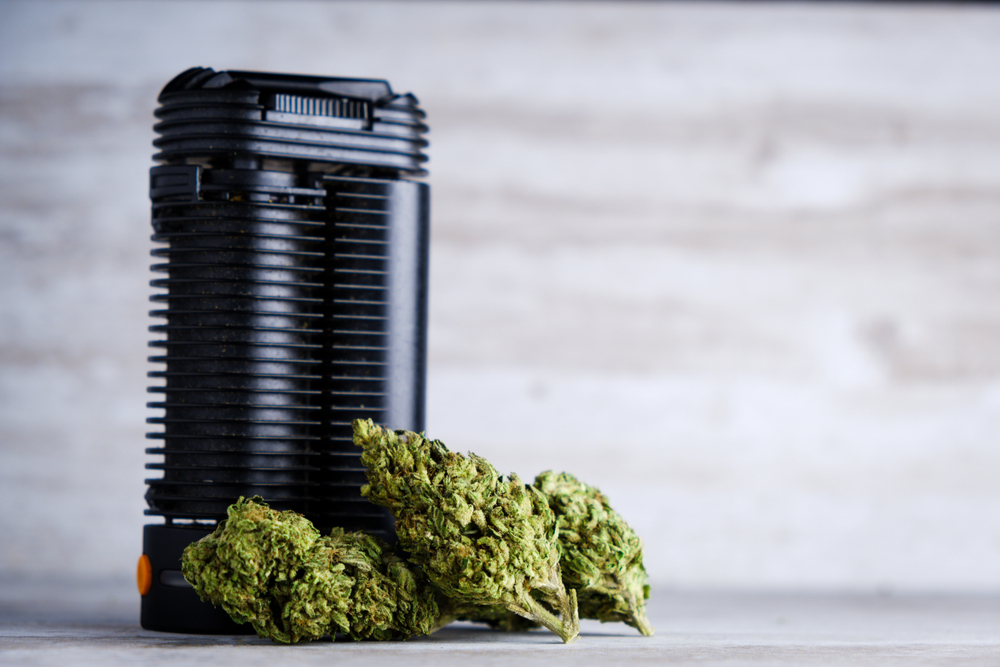How Do Dry Herb Vaporizers Work?

Typically, when someone imagines a vape rig, they think of a tool that transforms some magical liquid extract into an inhalable vapor. That liquid can come in a variety of dosages and flavors, with a variety of ingredients — some of which are less than safe. However, the liquid is easy to insert into the device, either because it comes in a pre-packaged cartridge or because the rig is intuitively built.
When it comes to vaporizers built for cannabis, you can find e-cigs that utilize THC or CBD juice just like any other vape — but you can also find vaporizers that utilize dry herbs. If you are fascinated by this concept and want to learn more, read on to the mechanics of dry herb vaporizers and how to use one properly.
Conduction vs. Convection
Heating is the essential component of any vaporizer, but controlling the heat is particularly important for dry herb vapes. Too much heat in the wrong places can cause the bud to combust, or burn. Burnt flower generates smoke, not vapor; that smoke has a harsh flavor and is much more difficult to hold in the lungs, and the excess heat can degrade the cannabinoids within the bud to produce a lower-quality high. Though old-fashioned joints and pipes function by burning weed, dry herb vapes show that there is a better way to heat up cannabis and inhale.
There are some dry herb vaporizers that heat flowers just as other vapes heat liquid: conduction. This heating method puts a heating element in direct contact with the flower, which results in rapid heating but also makes heating a bit less controlled. The heating element — usually a metal plate on which the flower sits — might heat up unevenly or cause the flower to burn where the two come in contact. As a result, inexpensive and low-quality dry herb vapes tend to use conduction.
More reliable dry herb vaporizers use convection, which is an indirect method of heating up flowers. In convection vapes, the rig uses a heating element to super-heat air in a separate chamber from the flower. When the air is properly heated, it floods the chamber with the bud, which exudes vapor for you to inhale. Convection vapes allow for greater precision in temperature, which preserves cannabinoids, terpenes, and other compounds for inhalation.
There are some e-liquid and cart vapes that use convection, but because the technology employed is a bit more complex, it is often reserved for dry herb or cannabis concentrates, which benefit more from the indirect heat. Convection isn’t mandatory for dry herb vaporizers — you can find low-cost conduction vapes that can process flowers — but it will vastly improve the experience of inhaling and getting high.
Step-by-step Dry Herb Vaping
The anatomy of a dry herb vape isn’t all that different from that of a typical e-cig, but the process of using a dry herb vape requires a bit more finesse. Here’s a step-by-step guide, so you can make the most of your new, exciting vape rig:

Step 1: Charge Your Vape. There are some tabletop cannabis vaporizer models that must be plugged into the wall, but most people choose portable vapes, which rely on a rechargeable battery. While your vape is charging initially, you might take the time to read the manual included with your particular rig, which will provide unique insights into your make and model.
Step 2: Burn off. Though your manual won’t tell you to do this, you should clear your vape’s chambers of any residue left over from the manufacturing process. You should inspect the chamber where you place flowers and wipe out any visible particles. Then, you should set your vape to its highest heat setting, which should incinerate any junk in your vape that you don’t want to inhale. You can repeat this process two or three times, to be extra safe.
Step 3: Grind Your Flower. Just as you wouldn’t place a whole nug into the bowl of a pipe, you want a medium-fine grind on your flower to increase the surface area and ensure even heating. We recommend using a three- or four-chamber grinder, which will collect any leftover kief.
Step 4: Pack Your Chamber. Your vape’s instructions will tell you how to pack the chamber properly. You never want to overpack the chamber, which will likely ruin your bud and potentially break your rig.
Step 5: Preheat. Most dry herb vaporizers allow you to preheat the rig, which helps the chambers heat up faster when you load them with bud. You should familiarize yourself with the preheat feature and employ it.
Step 6: Set Your Temperature. Some vapes have programmed temperature settings, while others give you full control with a temperature dial. You will need to experiment with the temperature to find the right heat for your flower — and you might talk to a budtender at a West Memphis dispensary — but most people choose a temp somewhere between 170 and 220 degrees Celsius.
Step 7: Enjoy. At this point, you can inhale. Likely, the vapor will be a bit more potent than you are accustomed to, and it will also be mellower and easier to hold in your lungs. Thus, you should try to remember to take it slow, with smaller and less frequent hits than typical.
Dry herb vapes are hardly brand-new technology, but innovations in vaping tech have drastically improved the experience of vaping weed. If you are interested in trying a dry herb vaporizer, you should — especially now that you know a bit more about how dry herb vape rigs work.
Martin B.
Latest posts by Martin B. (see all)
- Vaping Culture in Canada: A Growing Trend - May 7, 2024
- Best Dab Pens You Can Buy in 2024 - April 12, 2024
- A Nuanced Exploration into Disposable Vapes Vs MYLÉ Pods: Unraveling Health Ramifications - March 18, 2024






